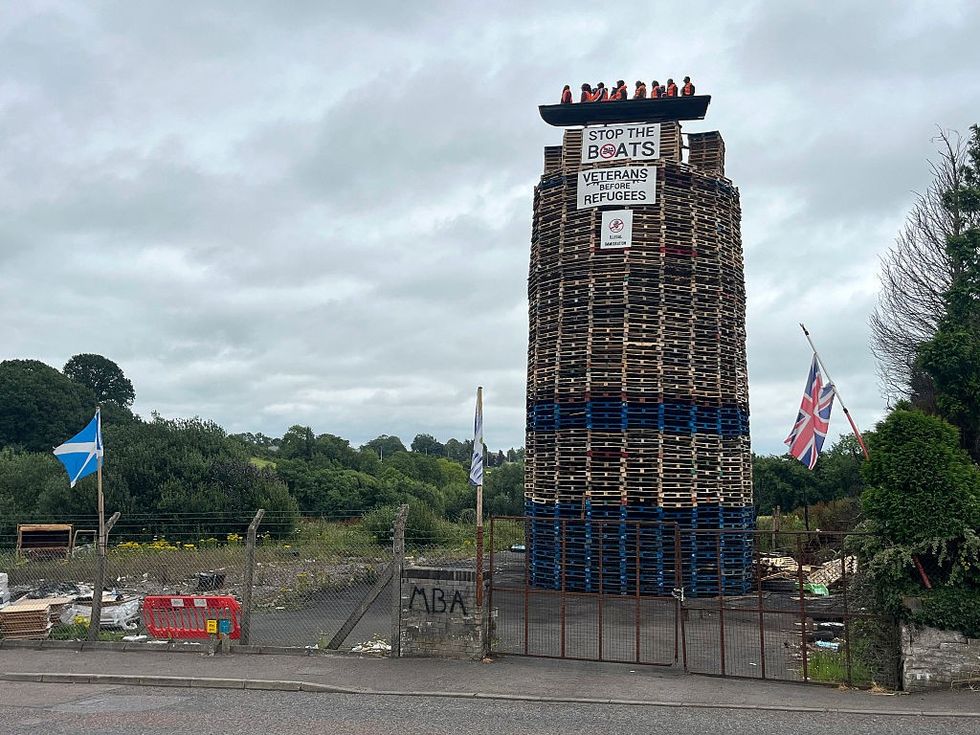INDIA's capital has shut down its schools until further notice due to dangerous levels of air pollution, while residents of Lahore in neighbouring Pakistan have pleaded with officials to take action over the acrid smog engulfing the region.
Air quality has worsened across northern India and adjacent parts of Pakistan in recent years, as industrial pollutants smoke from seasonal crop burn-off, and colder winter temperatures coalesce into toxic smog.
Lahore, a city of more than 11 million people in Punjab province near the border with India, was recorded as the most polluted city in the world Wednesday by a Swiss air quality monitor.
Delhi meanwhile is consistently ranked as the world's worst capital for air quality, with levels of pollutants last week reaching more than 30 times the maximum limit recommended by the World Health Organization.
The Indian megacity of 20 million people has cancelled classes and urged people to work from home while also banning non-essential trucks from entering the city in an effort to clean the smog.
In an order passed late Tuesday (16), the city's Commission for air quality management said all education institutions should remain shut until further notice.
"Anti-smog guns" -- which spray mist into the air -- and water sprinklers were ordered to operate at pollution hotspots at least three times a day, and six of 11 thermal power plants around Delhi were told to cease operations.
The commission also said that at least half of government workers were being sent home and private firms should follow suit.
The order came days after the Delhi government pushed back against a call by India's Supreme Court to declare the city's first "pollution lockdown", which would restrict the population to their homes.
Even as Delhi was blanketed by toxic smog in recent days, India led the charge to weaken anti-coal pledges at the UN COP26 climate summit, with critics saying it prioritised economic growth over the planet's future.
Breathing diseases
Lahore on Wednesday (17) had an air quality ranking of 348 according to Swiss air quality monitor IQAir, well over the hazardous level of 300 set by the WHO.
"Children are experiencing breathing diseases... for God's sake, find a solution," labourer Muhammad Saeed said.
In recent years, Lahore residents have built their own purifiers and filed lawsuits against government officials in desperate bids to clean the air.
But authorities have been slow to act, blaming the smog on India or claiming the figures are exaggerated.
Lahore is consistently ranked one of the world's worst cities for air pollution.
"We are poor people, we can't even afford a doctor's charges," shopkeeper Ikram Ahmed said.
"We can only plead with them to control the pollution. I am not a literate person, but I have read that Lahore has the worst air quality and then comes India's Delhi. If it continues like this, we will die."
Labourer Saeed said he had stopped taking his children outside for walks because of the filthy air.
"There are factories and small industries operating here -- either shift them somewhere else, give them compensation or provide them with modern technology, so we can get rid of this smog," he said.

















 Kap’s Cafe in Surrey was struck by gunfire late at night with staff still insideInstagram/
Kap’s Cafe in Surrey was struck by gunfire late at night with staff still insideInstagram/ Kaps Cafe Instagram Story Instagram Screengrab/
Kaps Cafe Instagram Story Instagram Screengrab/ Kaps Cafe Instagram Story Instagram Screengrab/
Kaps Cafe Instagram Story Instagram Screengrab/


